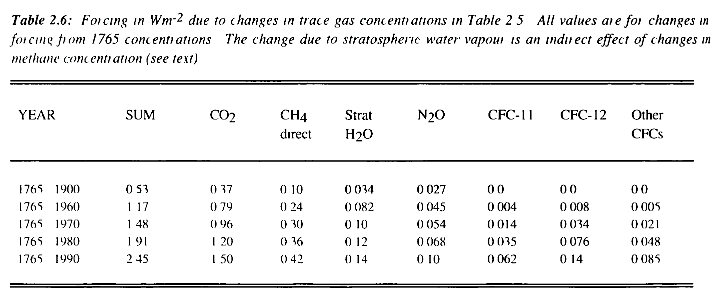This page is part of a series based on answers to questions from Craig Kelly MP, prepared by Murray Scott. (See here for explanation.) This page is a response to three questions on the causes of global warming.
1. ”How much of this warming is attributable to natural factors?”
Although many natural factors have been widely investigated, none show a credible correlation with the current-rate of warming.
In 1920, the Serbian astrophysicist Milutin Milankovic hypothesised that periodic changes in the Earth’s rotational motion around the sun (orbital eccentricity, axial tilt and axial precession) might explain past ice ages. Subsequent studies do show a degree of correlation for the timing of ice ages with Milankovic cycles, however these cycles predict that the Earth is currently in a long-tern “cooling trend”(that will continue for the next 23,000 years.
Similarly, the 11-year solar cycle (with changes in sun-spots, flares and other manifestations) does not explain the observed temperature results.
2. ”How much of this warming is attributable to man’s activities ?”
Supporting increasingly detailed theories of infrared radiation transmission through the atmosphere, the measured increase in the Earth’s surface temperature correlates well with the increase in CO2 concentrations, and these concentrations correlate well with man-made CO2 emissions.
3. ”How much is attributable to increases in CO2?”
There are a number of “heat-trapping” gases i.e. gases that absorb infrared radiation, mainly outgoing, and then re-emit in all directions including downward, adding to the energy absorbed at earth’s surface from direct sunlight.
On average, CO2 remains in the atmosphere for over 100 years. This means that the concentration of CO2 will increase over time as further CO2 is emitted.
Although water vapour is the most abundant “heat trapping” gas, it has a relatively short residence-time in the atmosphere (about 10 days on average) before it precipitates out. Thus it does not build-up in the atmosphere over a long timescale. As temperatures rise, more water is evaporated. But as water vapour increases, more clouds can form that also act as reflectors of the incoming solar energy, thus complicating the picture.
Other gases, such as methane, have more potent “heat trapping” ability per molecule, but they are simply far less abundant in the atmosphere and generally have a smaller residence-time. In aggregating the effect of such greenhouse gases , the term “CO2 equivalent” ( CO2 e ) is used.
The measured increase in atmospheric CO2 concentration shows close correlation with the observed increase in the Earth’s surface temperature. Thus it is CO2 that puts us at the greatest risk of irreversible changes if it continues to accumulate unabated in the atmosphere. CO2 emitted today will determine the climate that our children and grand-children will inherit.
As increasing amounts of CO2 are emitted into the atmosphere, the Earth’s temperature rises, and more water evaporates, thus providing additional “heat trapping” and competing albedo reflection. But overall the short residence-time of water vapour means that its effect is transitory.
Additional empirical evidence for the effects of CO2 and other greenhouse gases is provided by high- resolution Fourier-Transform Infrared Spectroscopy (FTIR). This shows increases in incoming radiation at the Earth’s surface at the specific wavelengths of the greenhouse gas emissions. Conversely, satellite measurements over the period 1970 to 1996 have shown decreases in the outgoing radiation escaping into space at these same wavelengths.
The changing contributions to greenhouse forcing from atmospheric gases are complicated, as discussed in Radiative Forcing of Climate from p47, and summarised in table 2.6 of that document, as follows (note: 1765 is baseline year for each period) :

Radiation Forcing values quoted for these and less significant gases are also affected by regionally variable masking effects, as explained in Trends and patterns in the contributions to cumulative radiative forcing from different regions of the world.
Other, non-gasseous, troposphere pollutants, particularly “black carbon” from diesel exhaust, bushfires and woodstoves etc., are also reckoned to contribute significantly to global warming but local variation in particle size, concentration, composition, humidity, altitude and residence time make modelling of global forcing of BC difficult to compare with CO2 (Wikipedia).